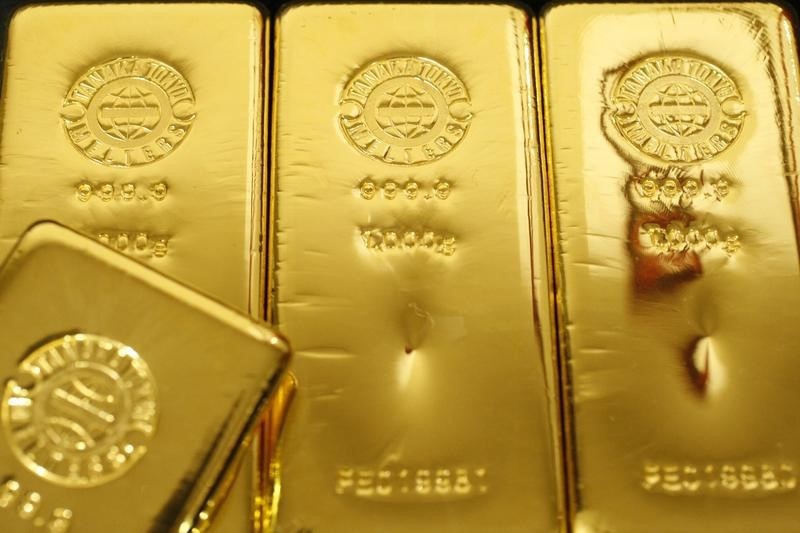United Homes Group stock plunges after Nikki Haley, directors resign
By Ambar Warrick
Investing.com -- Gold prices hovered around a one-month low on Friday amid pressure from rising short-term yields, and were headed for a second consecutive weekly loss as markets reassessed their expectations of more interest rate hikes from the Federal Reserve.
The yellow metal struggled to recover from sharp losses logged last week - its worst week so far this year. A string of hawkish signals from Fed officials also kept the yellow metal under pressure, as Fed Chair Jerome Powell and several other speakers warned that interest rates will likely rise further.
But higher-than-expected unemployment claims data released overnight painted a mixed picture of the jobs market, given that a strong nonfarm payrolls reading for January was what rattled gold markets last week.
Spot gold was flat around $1,861.76 an ounce, while gold futures fell 0.3% to $1,872.80 an ounce by 19:39 ET (00:39 GMT). Both instruments were set to lose about 0.2% this week.
Uncertainty over a U.S. recession also grew, as a deepening inversion in the yield curve sent warning signs on the economy. Rising short-term yields also pressured non-yielding assets like gold.
A new year rally in gold now appears to have run out of steam, with investors reassessing their expectations for more interest rate hikes by the Federal Reserve. While a potential U.S. recession is expected to eventually benefit gold, the metal could face more short-term headwinds from rising interest rates.
Other precious metals were also pressured by higher yields. Platinum futures fell 0.1% to $959.65 an ounce, while silver futures plummeted 0.9% to $21.940 an ounce. Both metals were also headed for steep weekly declines.
Among industrial metals, copper prices were set for a muted week as fears of a looming recession were countered by some optimism over a demand recovery in China, the world’s largest importer of the red metal.
High-grade copper futures fell 0.1% to $4.0635 a pound, and were set to end the week largely unchanged.
Focus this week is on Chinese inflation data to gauge whether spending picked up in January, after the country relaxed most anti-COVID restrictions. Business activity saw a somewhat mixed recovery in January, data showed last week.
